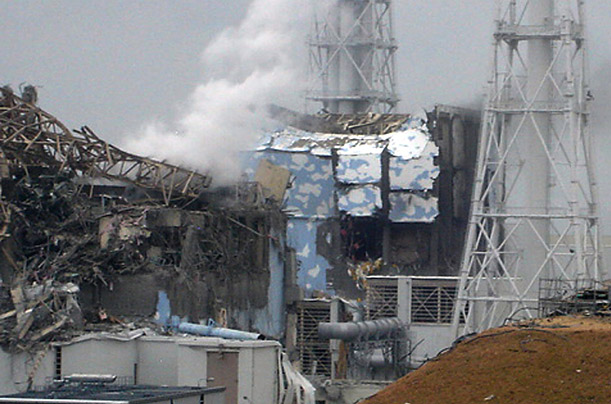The following is the status of each of six nuclear reactors at Tokyo Electric Power Co.’s crippled Fukushima Dai-Ichi power plant as of 9 a.m., Japan time.
The company pumped fresh water into No. 1, No. 2, and No. 3 reactors, Japan’s Nuclear and Industrial Safety Agency said. The external power supply has been restored for all six reactors as of March 22, according to Tokyo Electric Power.
Japanese Chief Cabinet Secretary Yukio Edano said a “certain level of progress” has been made while speaking on an NHK television program today.
No. 1: Contaminated water in the turbine structure contains 10,000 times the radiation of regular cooling water, NHK said. The company has started removing contaminated water from the basement of the turbine building and will prepare more pumps to drain the water, the agency said. The unit has been damaged since a March 12 hydrogen explosion destroyed the building’s walls. The seriousness of the reactor’s threat to safety is rated level five on an international scale of 1-7.
No. 2: Contaminated water in the turbine structure contains 10 million times more radiation than normal cooling water, NHK said. The company plans to remove contaminated water as early as today, the agency said. The company plans to start using freshwater on fuel pool from March 28, the agency said. The containment chamber may have been damaged in a March 15 explosion, and a power cable was reconnected to the unit on March 19. The reactor is rated a level-five threat.
No. 3: Contaminated water in the turbine structure contains 10,000 times the normal radiation, NHK said. The company is considering ways to remove the contaminated water, the agency said. A March 14 explosion damaged the unit’s fuel cover. The reactor is rated a level-five threat.
No. 4: The company plans to spray water in the spent-fuel cooling pool this afternoon, the Nuclear and Industrial Safety Agency said. The agency said on March 17 there may be no water in the pool. It’s rated at three on the threat level. This reactor was undergoing maintenance when the earthquake hit.
No. 5: The unit was idle for maintenance before the earthquake.
No. 6: The reactor achieved cold shutdown at 7:27 p.m. on March 20 when the temperature fell below 100 degrees Celsius, the company said. A backup generator was fixed March 19, according to a company press release. The unit was idle for maintenance before the earthquake.

























